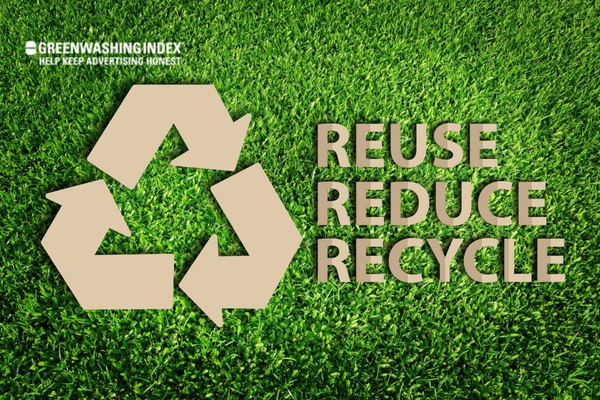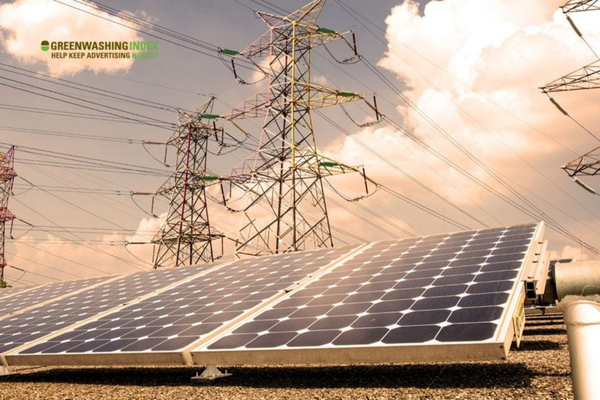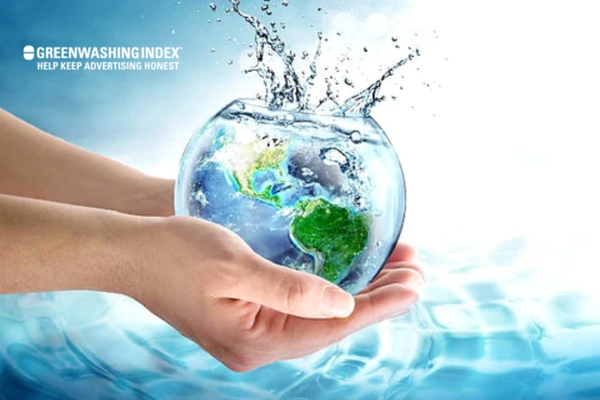Are you eager to become more environmentally friendly but not quite sure how to go green? You’re not alone! Many of us want to make planet-friendly choices but might feel overwhelmed by the vast world of environmental consciousness. It doesn’t have to be complicated, though; small changes can tally up to a big impact on our environment.
The good news is anyone can adopt a green lifestyle, and I’ll show you how—with simple, effective steps that are easy enough for anyone to weave into their daily life.
Wondering how you can be more environmentally friendly? It starts with embracing simple habits like carrying a reusable water bottle or coffee cup instead of disposable ones. You could opt for energy-efficient light bulbs, take shorter showers, or bike instead of driving for short trips.
Embracing these eco-friendly habits does more than reduce your carbon footprint; it paves the way for a sustainable future—plus, many such changes save money and might even improve your health!
Discover What’s Inside This Easy Guide
- Step-by-step guide on making greener choices
- Money-saving eco-efficient tips
- Easy-to-follow advice on reducing waste
- Secrets for effortlessly living an eco-conscious life
Quick Go-Through on How to Go Green?
Starting a journey to be more environmentally friendly can feel overwhelming, but it’s important and easier than you might think. Making planet-friendly choices not only helps Earth, it feels good to know I’m doing my part for future generations.

When I decided to live a green lifestyle, I realized that little changes make a big difference. It’s about being aware of my impact and finding ways to lessen it. Here are six simple steps that anyone can follow to become more eco-conscious:
1. Cut Back on Single-Use Plastics:
Plastic pollution is a massive problem. So, I try to use less plastic by carrying reusable bags, bottles, and containers. This one change reduces so much waste.
2. Conserve Energy:
Saving energy at home is another way I help the planet. Simple actions like turning off lights when leaving a room or using energy-efficient bulbs do add up over time.
3. Eat Locally-Sourced Foods:
The further food travels, the bigger its carbon footprint due to transportation emissions. Eating food grown nearby supports local farmers and cuts down on greenhouse gases.
4. Recycle Properly:
Recycling can be confusing sometimes, but taking time to learn what goes in each bin means less ends up in landfills.
5. Use Public Transport or Carpool:
Instead of driving alone every day, sharing rides or taking the bus reduces traffic congestion and air pollution—a double win for the environment.
6. Support Eco-friendly Products and Companies:
When shopping for household goods or clothes, I choose products made with sustainable materials from companies that care about their environmental impact.
These steps aren’t hard; they just require me to make conscious decisions throughout my day-to-day life—decisions that contribute toward environmental consciousness and help reduce my carbon footprint for a healthier planet.
Also Read: Old Electronics Disposal: Ultimate Recycling Tips Guide
Step 1: Reduce, Reuse, Recycle – The Basics to Becoming Environmentally Friendly
When it comes to being more environmentally friendly, there’s a simple start: Reduce, Reuse, Recycle. These three words are key to a green lifestyle, and they can make a big change. Let me take you through what each means and how they help our planet.

Understanding the Three R’s
- Reduce: This means using less stuff. When you use less stuff, you create less waste. Think about it like this: If I don’t buy a plastic water bottle every day and instead use one refillable bottle, I’m reducing the number of bottles that might end up in landfills or oceans.
- Reuse: Before throwing things away, think if they can be used again. For example, turning an old jar into a plant pot is reusing. It’s giving something another life instead of letting it become trash.
- Recycle: Some things can’t be reused but can be turned into something else. That’s recycling! Paper or cans can be collected and made into new paper or cans.
Practical Tips for Everyday Living
Here are some things anyone can do to reduce waste:
- Go for reusable bags when shopping instead of single-use plastic ones.
- Carry around a reusable water bottle or coffee cup to avoid buying disposable ones.
- Buy in bulk to cut down on packaging.
- Fix broken items instead of throwing them out.
- Think before printing; ask yourself if you really need that document on paper.
- Choose products that have been made from recycled materials – it supports recycling systems and reduces waste.
To reuse effectively:
- Donate clothes and goods instead of throwing them away so others can reuse them.
- Use glass jars as storage containers for foods or small items around the house.
- Keep old newspapers for wrapping gifts or cleaning windows.
Here are some recycling tips:
- Separate your trash at home – keep recyclables like cardboard, glass, and plastics separate from general waste.
- Make sure what you put in your recycle bin is clean – leftover food bits could spoil everything inside!
- Know what your local community recycles – not all places take the same materials!
Following these tips might seem simple, but imagine if everyone practiced them daily. We’d live in a much more environmentally friendly world!
Also Read: Glass Recycling Uncovered: Endless Lifespan Explained!
Step 2: Energy Efficiency – Powering Your Life Sustainably
Being environmentally friendly isn’t just about recycling or cutting down on plastic. A big part of it is how we use energy in our homes. With a few smart choices, I can make my home use less power and reduce the harm to our planet.

Upgrading to Eco-Friendly Appliances
One of the first things I did was look at my appliances. Old fridges or washing machines can take up a lot of electricity. By changing them to models that have an ‘Energy Star’ label, I started using less power right away.
Here’s what I found out about eco-friendly appliances:
- Less energy usage: They are made to work well while using as little energy as possible.
- Saves money: Even though they might cost more at first, in the long run, they cut down on utility bills.
- Better for the planet: Using less electricity means fewer greenhouse gases from power plants.
- New features: Many also come with cool new technologies that make life easier.
Small Habit Changes with Big Impacts
It’s not all about buying new stuff, though. There are some very easy things I do every day that help a lot:
- Turning off lights: When I leave a room, I make sure to flip off the switch.
- Unplugging chargers: Once my phone or laptop is charged up, out comes the plug!
- Washing clothes in cold water: It cleans just as well but uses less energy than hot water does.
- Air-drying clothes: On nice days, why waste power with the dryer? The sun does it for free!
- Adjusting my thermostat: If it’s a bit cooler outside, maybe I don’t need the heat so high.
Each small choice adds up over time and can really lower how much carbon dioxide goes into the air.
By focusing on these changes — both big appliance upgrades and tiny habit tweaks — I’m helping myself and our world be healthier and happier!
Also Read: Water Conservation Tips for Home: 40+ Savvy Strategies
Step 3: Water Wisdom – Conserving Our Most Precious Resource
Water is crucial. We need it to live. But we must care for it sensibly. I want to suggest some easy ways you can save water every day.

Smart Usage Equals Smart Savings
Here are some things you can do:
- Fix leaks: That drip from your faucet adds up over time. By fixing leaks, we can save a lot of water.
- Turn off the tap: When you brush your teeth or wash dishes, don’t leave the water running the whole time.
- Shorter showers: Can you take a five-minute shower? It saves water compared to a bath.
- Full loads: Wait until your washing machine or dishwasher is full before you start it.
- Water-efficient goods: Think about buying products that use less water if yours are old and need replacing.
- Collect rainwater: Use a barrel to collect rainwater, then use it to water plants or clean outside.
All these steps help in reducing how much water we use every day.
The Ripple Effect of Saving Water
Saving water does so much good for us and Earth:
- Healthier rivers and lakes: Less demand means natural places keep their precious water.
- Less energy used: Moving and treating water takes energy, so using less means saving power, too.
- Fewer droughts: If we all use less, there’s more to go around in dry times.
When one person saves water, they inspire others to do the same, creating waves of change that help our planet stay blue and green.
Simple choices like those above make big differences because everything connects together in nature – just like drops make an ocean!
Also Read: Environmentally-Friendly Camping: Your Ultimate Green Guide
Step 4: Green Transportation – Moving Towards an Eco-Friendly Tomorrow
Let’s take a closer look at how to be environmentally friendly when it comes to getting around. I believe that each one of us can make a big difference with just a few changes in how we choose to travel.

Rethinking How We Travel
Promote alternatives like biking, walking, car-sharing, or public transportation as key aspects of adopting a more environmentally friendly approach.
Imagine living in a world where the air is cleaner, and the streets are quieter. This isn’t just something out of a dream; it’s possible if we all decide to travel in ways that are kinder to our planet. Here’s what each of us can do:
- Biking: Riding a bike is not only good for your health but also reduces pollution since it doesn’t emit any harmful gases.
- Walking: When you can, choose to walk. It’s simple and doesn’t cost anything, plus there’s zero impact on the environment.
- Car-sharing: Sharing rides with others means fewer cars on the road, which leads to less traffic and pollution.
- Public Transportation: Buses and trains can carry lots more people than individual cars. Taking public transport means you’re helping reduce the number of vehicles on our streets.
By choosing these eco-friendly habits, I’m doing my part in helping move us towards an eco-friendly tomorrow.
The Benefits of Reducing Your Carbon Tire Tracks
Discuss the environmental advantages of minimizing reliance on personal vehicles.
Using personal vehicles less often can lead to many benefits for our environment:
- Less Air Pollution: Fewer cars mean fewer emissions, which equals cleaner air.
- Lower Carbon Footprint: When we don’t drive alone often, we help reduce greenhouse gasses that contribute to climate change.
- Conservation of Resources: Cars need fuel made from oil, which is a limited resource. By using alternative transportation modes, we save this precious resource.
- Reduced Noise Pollution: Less traffic results in quieter neighborhoods.
Remembering these benefits motivates me every day because I know even my small choices contribute positively towards keeping our planet healthy and green!
Also Read: Eco-Friendly Dishwashing: Save Water and Protect Earth
Step 5: Mindful Eating Habits – A Recipe for Being Environmentally Friendly
Eating can be more than just filling our bellies. It’s a big way we connect with our planet. Every food choice I make sends ripples through the environment.

So, how can I eat in a way that loves our Earth back? Let’s dive into two big ideas: choosing sustainable foods and cutting down on wasting food.
From Farm to Fork – Choosing Sustainable Foods
When we eat, it isn’t just about the taste. It’s also about where our food comes from and how it reaches us—this journey matters for being environmentally friendly.
Buy Local – Local farms grow beautiful veggies, fruits, and other foods that don’t travel far to reach my plate. This means less fuel burned to get them here—a win for reducing carbon footprint!
- Farmers’ Markets are Great: Here, I meet the real heroes who grow my meal. Plus, their fresh produce often skips the extra packaging.
- Community Supported Agriculture (CSA): Imagine getting a mystery box of farm-fresh goodies every week! That’s what joining a CSA is like.
- Local Grocery Stores: Some shops focus on local produce. They usually have signs telling me which foods grew up nearby.
- Plant-Based Goodness: Did you know plants are gentle on the Earth? Eating beans or vegetables instead of meat, even once a week, helps lower my impact.
- Beans and Lentils: These little wonders give me protein without asking much from Mother Nature.
- Seasonal Eating: When fruits or vegetables are ‘in season,’ they don’t come from far away greenhouses using lots of energy.
- Herb Garden: Growing herbs is so easy—even in small spaces! Fresh basil or rosemary? Yes, please!
Choosing to support local farmers and munching more plants brings me closer to nature. And it feels good knowing that I’m looking after our planet with every bite.
Waste Not Want Not – Cutting Down Food Waste
Throwing away food feels wrong when I think about all it took to reach my table—water, land, care, and effort. Here’s how I keep leftovers out of trash bins:
Plan My Meals – Knowing what I’ll eat throughout the week means buying only what I need. Bye-bye, impulse buys!
- Make a Menu: Each weekend, dreaming up dishes makes sure nothing goes bad forgotten in the back of my fridge.
- Shopping List Wisdom: Being armed with a list at the store keeps me from grabbing too much or stuff that goes bad quickly.
Store Food Smartly – Keeping things fresh means they last longer—I save money and help Earth by doing this:
- Fridge Patrol: Veggies like cool spots, while tomatoes hate cold toes; storing things right stop spoilage.
- Keep Berries Dry: Berries love going moldy if they’re wet; drying them off adds days till they hit their prime.
And when there are still leftovers?
- Box Them Up: Snagging extra dinner into lunch boxes gives me an easy meal without cooking again!
- Freezing Magic: Can’t finish something in time? Into the freezer, it goes—to enjoy weeks later without any guilt.
Chopping down on wasting food isn’t rocket science—it’s as simple as thoughtful buying and careful storing! By taking these steps toward mindful eating habits, not only do I support eco-friendly habits, but I also join hands in protecting our planet—one meal at a time!
Also Read: Industrial Carbon Footprint Reduction: Proven Strategies
Step 6: Support Eco-Friendly Businesses
When it comes to living an eco-friendly lifestyle, one of the most powerful things I can do is choose where I spend my money. It’s not just about the products I use but also about which businesses get my support.
Companies that work hard to reduce their impact on the earth deserve my backing. In step six, let’s dive into why supporting green businesses matters and how to spot real environmentally friendly brands.
Why Your Dollar Has Power?
When I decide to buy something, I always remember that the money I spend is like my vote for what kind of world I want to live in. If I choose to buy from a business that cares about our planet, it’s like telling everyone that being environmentally friendly is important.
Here’s why it matters so much:
- Every Purchase Is An Endorsement: When you buy products, you tell companies what you support. Buying from green businesses means encouraging more eco-friendly practices.
- Growing The Green Economy: More money going into environmentally friendly firms means a stronger eco-friendly economy. It’s about supply and demand – as demand for green products goes up, more businesses will want to offer them!
- Creation Of Green Jobs: Supporting eco-conscious companies helps create jobs that focus on sustainability and caring for the Earth.
- Influence On Big Business: When big companies see that people prefer buying green, they might change how they do things, too. This can lead to big improvements because they have lots of power and resources.
Identifying Green Brands
To make sure my support goes to the right place, here’s how I identify truly green brands:
- Look For Certifications: Companies really into protecting our environment often have certifications like “organic,” “fair-trade,” or “rainforest alliance.” These are signs they are serious about being friends with the planet.
- Check Out Their Practices: A green brand doesn’t just sell eco-friendly products; it also cares about how things are made. They might use renewable energy or make sure their waste doesn’t harm nature.
- See How They Package Stuff: Eco-conscious companies usually use packaging that’s recycled or can be composted. Excessive plastic is a no-no!
- Transparency Is Key: Good brands tell you all about their work and its impact on the environment – look out for this openness; it shows honesty and commitment.
- Community And Charity Work: Many eco-friendly businesses give back by supporting environmental causes and initiatives—another sign of genuine care for our planet.
Remembering these tips has helped me make better choices as a shopper – ones that help both the environment and promote a more sustainable way of living!
FAQs
What are some simple changes I can make today to be more environmentally friendly?
You can switch off lights when you leave a room, use reusable bags, and recycle. These simple steps help reduce your carbon footprint.
How does being more conscious about water use benefit me financially?
Using less water means lower water bills. Plus, eco-friendly appliances can save money in the long run due to their efficiency.
Can you recommend any eco-friendly brands or products?
Yes, look for companies that promote green lifestyle practices, such as those making biodegradable items or using recycled materials.
Conclusion
Embarking on my journey toward being more environmentally friendly hasn’t only been about making planet-friendly choices.
It has been an eye-opening experience that reminds me every day how small changes amount to significant impacts on our environment.
The sheer simplicity in reducing, reusing, and recycling materials, upgrading to energy-efficient appliances, conserving water and energy, opting for green transportation methods, adopting mindful eating habits, and supporting eco-friendly businesses can make a true difference.
By integrating these steps into my daily life, I contribute towards a healthier planet while setting an example for others around me. The benefits of living an eco-conscious lifestyle are as much personal as they are global since sustainability leads to healthier communities and economies.
Joining the movement for a greener tomorrow is both a duty and a privilege that I am proud to take part in.



